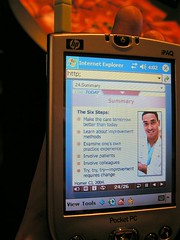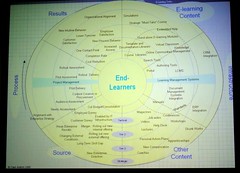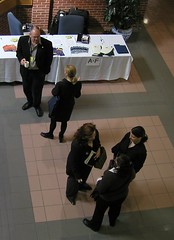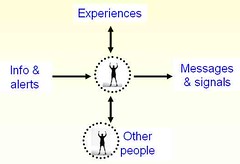Training Directors Forum 2005Wild Horse Pass Resorta $40 cab ride from the Phoenix Airport
When the mercury rises into the triple digits, I mimic an alligator, moving so slowly you’d hardly notice. That lethargic feeling pervaded this conference (which I had found peppy last year.) Regardless, I prefer this event to the cattle drive atmosphere of ASTD ICE. Small is beautiful, especially for schmooze.
Understanding Human Potential and MotivationTom Rath, Global Practice Leader, The Gallup Organization

The “Theory of the Dipper and the Bucket.” Every interaction counts, adding to or taking away from your bucket. Helping another fills your bucket.
Positive emotions (filling). 10 years longer lifespan. 20,000 3-second discrete moments in a human day. John Gottman: predict future of marriage from ratio of positive to negative comments.
If workgroup has 3:1 ratio, expect higher performance and satisfaction.
13:1 appears to be the upper limit on this.
65% of American workers have received no recognition in the last year.
Depressed people have 3.5x more healthcare costs.
22 million workers actively disengaged. Costs $250 - $300 billion a year in lost productivity.

Strategy for building a more positive organization:
• Prevent bucket dipping. One negative person can infect dozens of others.
• Shine a light on what is right. Developing for strengths. Average reader goes from 90 to 150 wpm. High performers go from 350 to 2900 wpm.
• Make best friends. You’ll be happier on the job.
• Give unexpectedly. The gift of responsibility.
• Reverse the golden rule.
This is good stuff, but it is not new stuff. I prefer the work of Marty Seligman on Authentic Happiness and credit Marty, not Tom Rath’s grandfather, as the inventor of the positive psychology movement.
Human Performance Improvement (HPI):Research and Theory into Practice
Harold Stolovitch
Research is not the practitioner’s function. Research & theory is critical to successful practice. Yet research and practice are totally difference areas.
“Feedback leads to improved performance.” Source: Thorndike. The claim is too global. Actually, feedback does not uniformly improve performance. Appropriate question is “What must I consider so that feedback improves performance?” Feedback can be a diversion or can be persuasive and have impact.
Locus of control. Who’s in control of your life?
“Immediate feedback is more effective in improving performance than delayed feedback.” But in complex situations, immediacy may mean overload.
“Job satisfaction leads to improved performance.” Focus instead on the effective management of work patterns. Job challenge.
Harold’s message: Beware of blanket statements.
This just in: Training doesn’t work!“Successful performance during training usually results in improved post-training performance.” Meta-analysis shows impact is minimal. This was another of Harold Stolovitch’s research points. I heard it echoed in many presentations.
A couple of years ago, some people thought I was nuts to say “Courses are dead.” This week I heard numerous speakers says “Training doesn’t work.” There seems to be a groundswell of praise for informal learning and a resurgence of EPSS.
Netwalking
Early every morning I joined a group of speed-walkers for a walk along a nature trail, for both exercise and talking with people. Caroline Balling led us through warm-up exercises before setting off at a blazing pace.
Mary Kay Vona, IBM“Learning is part of your life.”
An empowered learner becomes the creator of content as well as its consumer.
Courageous ConversationsRobert Hathaway, Pfizer
Listen in on business conversations at Pfizer, and you are likely to hear things like “Are you getting min on me?” or “Isn’t that a win point of view?”
Pfizer won a Training Magazine award for, naturally enough, its training. Bob Hathaway described a program entitled Courageous Conversations that struck me as more a culture change than mere training. Most of the organization participates.
The foundation belief is that “An essential competency for line leaders is the robust ability to engage in highly skillful conversations around challenging issues.”
Conversations are shaped by the ancient defense mechanism known as the fight or flight response that’s hardwired into every human brain. The fight conversational style is competitive; Pfizer calls this a “win” conversation. The flight style is accommodating, which often involves evading tough issues; this is the “min” style.
Business conversations at Pfizer are no longer knee-jerk emotional responses because people have a means of critiquing the quality of the conversation process. They ask, “Is the information valid? Are we making an informed choice? Are we exercising mutual control over the conversation?”
Participation in Courageous Conversations is voluntary. Most senior managers have participated. This strikes me as invaluable. Examining the quality of the conversation gives employees a way to conduct more rational decisions.
The Learning Team: How to Leverage Brain Power for Maximum Effectiveness
Ann Herrmann-Nehdi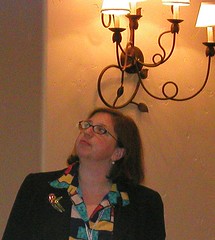
Ann and I met years ago but I’d never heard her speak. I’m glad I did. Her workshop had the audience making origami swans, taking polls, sorting cards, voting…learning experientially.
One very cool exercise. Ann asked us to think back on our favourite session. Then we broke into pairs. Both members of the pair spoke simultaneously about their topic. Neither I nor my partner heard a word the other said.
Tom Allen, MIT. Data indicate that when people are more than 50 feet apart, their likelihood of collaborating > once a week is 10%.
Productive teams vs non productive teams use conversation 270% more; value social interaction 120% more. Nipporica Asso. Study of Global Teams
Too bad the presidential election didn't go like this.
Booz AllenEd Cohen
Great story of implementing informal learning.
Success Factors:
Ed Cohen: “Learning is and should be shareware.”
Powered Performance
Ghenno Senbetta walked me through the most recent iteration of his performance improvement process. His company helps organizations use technology to tackle problems. For example, if a sales force needs to keep pace with competitors, he might help them set up RSS feeds to keep them on top of latest developments.
At Last! Proof that Training WorksLaurie Bassi, CEO, McBassi & Company, Inc.
• People are accounted for as “costs”
• Investments in developing people are “hidden costs”
• Financial markets penalize organizations with high (and “unexplained”) costs
• Compensation packages increasingly align executives’ interests with those of financial markets
A series of portfolios of firms that made the largest per capita investments in training subsequently returned 16.3% per year, compared with 10,7% for the S&P 500 index.
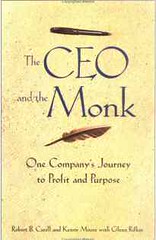 Kenny Moore
Kenny MooreRather than try to describe the wonderful guy who is the monk of the best-selling The CEO and The Monk, I'll quote the beginning paragraphs of an email that arrived from him the day after the conference. This particular theme struck home with many of the people I talked with.
"Become a Better Communicator by Keeping your Mouth Shut" By Kenny Moore
In corporate life we are in serious danger of believing that those who talk the loudest win the day. My 20 years in business have taught me that leaders who can actually keep their mouths shut and ears open have a better chance of being heard, believed and followed.
Transplanting Monastic Practices
When I lived in the monastery as a Catholic priest, we had a spiritual practice called the “Grand Silence.” Each evening after dinner and night prayer, we would retire to our cells under a cloak of silence that reigned until after Mass the following morning. It was spiritual time spent reflecting on life, death and one’s relationship to the Divine. A chance to grapple with the dynamic tension between human frailty and the personal call to holiness. While religious reading was tolerated, we were encouraged to spend the time creatively doing nothing. The Roman philosopher, Cato, once said: “Never am I more active than when I do nothing.” Granted, he wasn’t a monk, but he was articulating one of life’s golden truths. In sacred silence, we have a chance to hear an alternative voice beyond our self-serving subconscious. There are certain messages that will only be revealed in darkness and uncluttered space. Those who have the fortitude and faith to wait there are often copiously rewarded.
I came to understand how valuable this silence was only after I left the monastery and got married. When my wife and I returned from our honeymoon and began our life of marital bliss, she would, each evening, talk about her day at work, planned projects for the house, the number and names of our expected offspring, as well as an endless array of other wifely concerns. It took about a week before I broke under the barrage of words. “Dear,” I remember saying, “In the monastery, we didn’t talk after dinner; we had the ‘Grand Silence.’” I explained that I wasn’t used to ongoing evening conversations. “I need some quiet in the house,” I whispered. With concern and respect for her new husband, she lovingly replied: “Honey, you’re so damn weird!”
Kenny is a rare individual. He's so authentic that it's disarming. He's able to communicate emotionally and verbally at the same time. If you have an opportunity to hear him speak, take it.
Tom King, MacromediaTom was in fine form. He told me a way to glean content from SMEs. Get the experts to write the final exam questions. Then go back to get them to answer those questions. We envision VREL – very rapid eLearning.
Adobe+Macromedia will become the fifth largest software company in the world.
What the bleep?What the bleep? is the title of a loony movie bankrolled by former supporters of con-man/guru/shyster Frederick Lenz. Through interviews and examples, the film presents head-turning forays into quantum physics, complexity theory, alternate reality, biological drives, and mysticism. Here's the
trailer. I suspect that Dale Dauten and Nancy Rizzo-Roberts of The Innovation Lab modelled their presentation on the movie.
“We are emotional beings pretending to be rational,” said Dale before introducing the irrational Nancy, a PhD biophysicist from the Mayo Clinic. String theory connects everything in the universe. We human body vibrates at 54 – 70 gigahertz. Remember Kirlian auras??
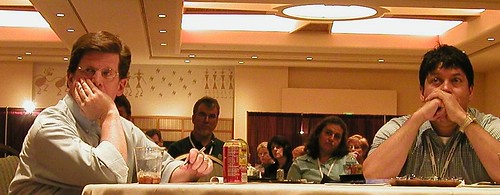
Skeptics in the audence.
David Metcalf gave a penetrating presentation on mobile learning, a topic on which he's writing a book -- if you have potential case studies, particularly in the government sector, please write him.
Look at the growth...
- 470 million wireless handsets worldwide; expected to reach 1 billion by 2005. (Gartner Group)
- More mobile phones were shipped in 1999 than the total number of cars and personal computers together. (Gartner)
- Wireless handsets will outnumber televisions and PCs combined by 2005. (Dataquest)
- The Cahners In-Stat Group is pegging the number using wireless data at 25 million subscribers in 2003. The Strategis Group anticipates 14.3 million wireless data subscribers in 2003 and 21.5 million in 2004.
Opportunity: eLearning on Devices
- Ease of Use
- Freedom
- Ease of Access
- Instant-on
- Coverage
- Convenience
- Increasing Battery Life
In-the-field, in-your-hands, on-demand...…perfect for performance support!
“Stolen moments of Learning”
His
presentation is on the web.
Wild HorsesYes, there are wild horses in Wild Horse Pass, although they’re on the residential side of Interstate 10. When I hear the phrase “wild horses,” I think of Monument Valley, John Wayne, and a beautiful, fleeting group of mustangs galloping across the desert. It’s good that I didn’t see the local variety. Apparently, they are pitiful animals, one hoof away from the glue factory.
Concluding Thoughts: Training Ain't Training“Successful performance during training usually results in improved post-training performance.” Wrong.
Meta-analysis shows that the impact of training is minimal. Learning thrives, but training as we have known it has one foot in the grave.
I followed some of the
references Harold Stolovitch pointed us to; they are quoted on his site::
"American industries annually spend more than $100 billion on training…not more than 10% of the expenditures actually result in transfer to the job." (Baldwin & Ford, 1988.) (This finding was reconfirmed by Ford & Weissbein, 1997.)
"Most of the investment in organizational training...is wasted because most of the knowledge and skills gained...(well over 80 percent by some estimates) is not fully applied by those employees on the job. (Broad & Newstrom, 1992.)
This situation is not new. From
an article by Stolovitch and Keeps three years ago:
To Train or Not to Train
Gilbert (1996), Harless (1970), Rummler and Brache (1996), and Robinson and Robinson (1998) have all demonstrated that most performance deficiencies in the workplace are not a result of skill and knowledge gaps. Far more frequently, they are due to environmental factors, such as lack of clear expectations; insufficient and untimely feedback; lack of access to required information; inadequate tools, resources, and procedures; inappropriate and even counterproductive incentives; task interferences and administrative obstacles that prevent achieving desired results. To this list, we can add poor selection of persons to do the job and low value attributed to the desired process or outcome.
Yet when performance gaps occur, the default intervention is all too often “training.” And, if we’ve already trained them and they still aren’t attaining adequate results, why, let’s just train them again. Gilbert (1996) expressed it well when he stated that it is cheaper and easier to fix the environment than people, but we continue trying to fix people.
To close on this, if the reason for the gap is not lack of skill and knowledge, don’t train. Stop wasting money on training when it’s inappropriate.
Training without reinforcement, motivation, or relevance is like a hot dog without mustard. There's no need to serve a naked sausage because your title is Hot Dog Vendor; you're permitted to stretch a little, to do the right thing.
When one-shot training is found to be about as effective as following your daily horoscope, why would anyone choose to be called a Training Director?
Looking back at the sessions I attended at TDF, I see that few of them addressed training
per se. We talked of performance support, culture change, psychology, morale-building, spirituality, and informal learning. No one was selling courseware at TDF.
From here on in, we've got to play the inner game of training on a much larger field.
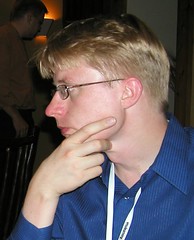 Enspire
Enspire CEO
Bjorn Brillhart has to be the hardest working guy to attend. A couple of years ago, you could count the employees of his simulation company on the fingers of your right hand. Now they have 50+ people on board and business is booming. Tuesday a blurb on Enspire appeared in the Wall Street Journal.
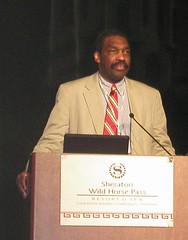 Bill Strickland
Bill Strickland is an amazing, inspiring guy who expects the best from people and gets it.






 CLO magazine
CLO magazine CLOs face so many decisions, weigh so many priorities and have to keep up with so many new things every day that they can use all the help they can get. The New Yorker once published a cartoon titled “Useful Things.” Pictured were a paperclip, a nail file, a Swiss Army knife and $10,000 in cash. This month, I’ll update the list and share a few things that may lift a little of the burden from the CLO’s shoulders.
CLOs face so many decisions, weigh so many priorities and have to keep up with so many new things every day that they can use all the help they can get. The New Yorker once published a cartoon titled “Useful Things.” Pictured were a paperclip, a nail file, a Swiss Army knife and $10,000 in cash. This month, I’ll update the list and share a few things that may lift a little of the burden from the CLO’s shoulders.  Mind Maps: “Don’t take notes; make notes,” said Tony Buzan, the inventor of mind-mapping. Mind maps—simple diagrams that connect concepts with lines—enable you to show relationships and think holistically. Use them to organize projects, index reports and explain thorny concepts. With a little practice, you’ll be mind-mapping subjects faster than you could outline them, and people will be able to grasp what you’re doing, too. Download free trial software from
Mind Maps: “Don’t take notes; make notes,” said Tony Buzan, the inventor of mind-mapping. Mind maps—simple diagrams that connect concepts with lines—enable you to show relationships and think holistically. Use them to organize projects, index reports and explain thorny concepts. With a little practice, you’ll be mind-mapping subjects faster than you could outline them, and people will be able to grasp what you’re doing, too. Download free trial software from  QuickTopic: Create a private discussion space on the Web in less than a minute, for free. What’s not to like? Use
QuickTopic: Create a private discussion space on the Web in less than a minute, for free. What’s not to like? Use  Blog: Go to
Blog: Go to  $10,000 in cash: Still useful. Some things never change.
$10,000 in cash: Still useful. Some things never change. 
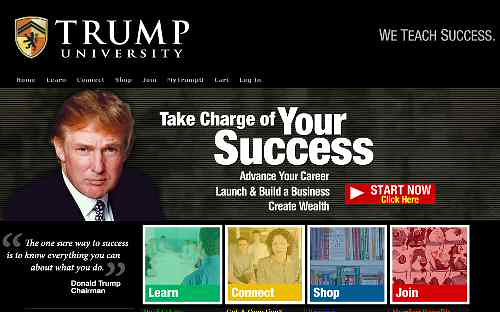


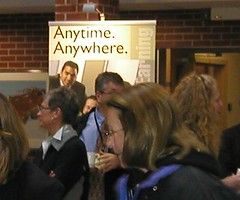





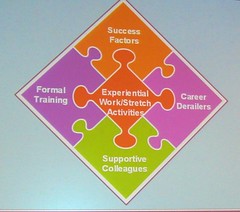











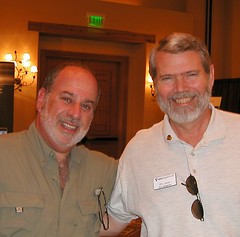





 Ensemble is based in Fredericton, New Brunswick, Canada. (With a boost from government, New Brunswick is becoming a hotbed of eLearning companies.) I spent several hours yesterday looking at the product, which goes live next week, and talking with Ensemble's founder, Ben Watson. Ben and I go back to SmartForce days when he was resident futurist and I a marketing advisor.
Ensemble is based in Fredericton, New Brunswick, Canada. (With a boost from government, New Brunswick is becoming a hotbed of eLearning companies.) I spent several hours yesterday looking at the product, which goes live next week, and talking with Ensemble's founder, Ben Watson. Ben and I go back to SmartForce days when he was resident futurist and I a marketing advisor.
